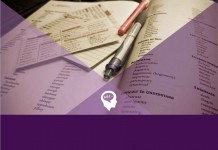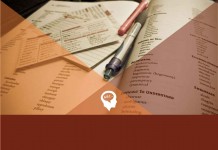Find the Odd Statement -Set3
Dear Aspirants
We are here with new set of questions series based on “Find the Odd Statement”. These type of questions are important as they have been previously asked in SBI PO exams held last year. In these type of questions you need to find out the odd statement out of 4 statements. The odd statement has a cause or Effect or situation which is not similar to that of other statements.
Try the Exercise here
Directions (Q1-5): Four statements are given below, labeled A, B, C and D. Among these, some statements are in logical order and form coherent paragraph. From the given options a), b), c), d) and e), choose the option the does not fit into the theme of the paragraph.
1). A. At one time in the history of education, one had to be wealthy to attend school.
B. At other times, women were kept from attending school, despite their standing in finances.
C. Financial aid was widely available to aid those less fortunate.
D. Today, this is not the case because school attendance is obligatory.
E. The law requires students who are between six and 16 years of age to attend school.
a) A b) B c) C d) D e) All fits to paragraph
2). A. A lot of energy is wasted because of poor infrastructure and lack of understanding of efficiency metrics.
B. The Environment Ministry’s proposal to prescribe energy-efficient temperature limits for air-conditioning units in public facilities is promising.
C. It is possible, for instance, to adopt the Paris idea and ask all major buildings to incorporate solar panel roofing or suitable green cover.
D. Equally, the Centre should conduct audit of public buildings to determine whether they are suitably designed, as climate control relies as much on passive influences such as insulation, green roofing and the nature of materials used in construction.
E. The continued success of the Montreal Protocol in its goal to eliminate HCFCs (Hydro chlorofluorocarbons) by 2030 will depend on reducing the acquisition costs of cleaner technologies.
a) E b) B c) A d) C e) All fits to paragraph
Find more Questions and Solve the Above Test with answers, Explanations, and more Questions
SEHPAATHI TEST APPLICATION : CHALLENGE YOURSELF
Test: Bnk_Eng_Odd-Stmt-Out_Set3
3). A. The first test would be of the strength of bilateral U.S.-Japan ties on the watch of U.S. President Donald Trump and Japanese Prime Minister Shinzo Abe.
B. The launch seems timed to test the strategic fortitude and tactical capabilities of new relationships in the broader power balance that reins in Pyongyang’s nuclear ambitions.
C. North Korea’s provocative action of launching four missiles into the Sea of Japan a few hundred kilometres from the Japanese coastline has triggered fears of renewed tension between nuclear-armed powers.
D. The commendable effort of the Six Party Talks to invest diplomatic currency in bringing Pyongyang back to the negotiating table got derailed early on in President Barack Obama’s first term.
E. North Korean Supreme Leader Kim Jong-un had already given these two leaders a wake-up call when his regime fired a medium-range missile last month.
a) A b) E c) C d) D e) B
4). A. A frequently cited example of obliteration is the loss of ecology in Goa due to rampant, illegal mining.
B. Given the weak effort at forging a consensus, there is little purpose in the Centre returning to the drawing board with another draft notification to identify ecologically sensitive areas.
C. Quite unscientifically, the issue is being framed as one of development-versus-conservation.
D. The idea that whatever is left of these fragile mountainous forests should be protected from unsustainable exploitation in the interests of present and future generations, while presenting sustainable ways of living to the communities that inhabit these landscapes, is being lost sight of.
E. The hesitation shown by the Central government in deciding upon full legal protection for one of its most prized natural assets, the Western Ghats in their totality is a major disappointment.
a) D b) A c) E d) B e) None of these
5). A. Unlike earlier discoveries of exoplanets, all seven planets could possibly have liquid water — a key to life as we know it on Earth — with three planets having the greatest chance.
B. This is by far the largest collection of Earth-like planets in the habitable ‘Goldilocks’ zone of a star — neither too close nor too far from a star, which raises the possibility of liquid water being present on the surface.
C. Only Earth has liquid water in the solar system.
D. The quest to find life outside the solar system got a big boost with the discovery of seven Earth-size extra-solar planets, or exoplanets, orbiting a dwarf star about 40 light years away.
E. Since the TRAPPIST-1 system is close by and the star is cool enough, it would be easier to decipher the various critical features of the planets.
a) E b) C c) B d) A e) None of these




















